How to distinguish an aspen from a poplar?
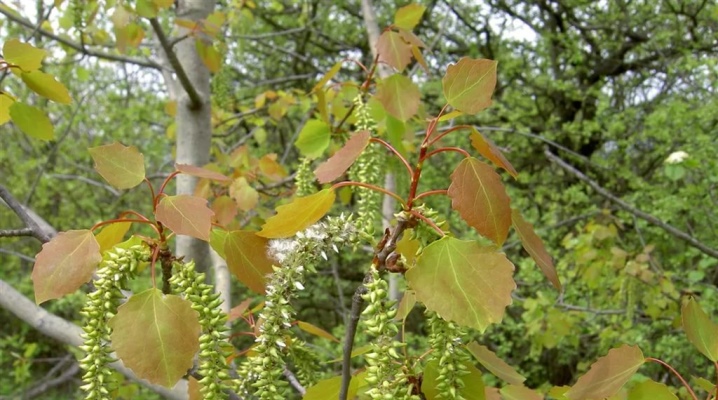
Not everyone can consider themselves expert botanists, and every now and then questions regarding a particular plant can be perplexing. But to understand the world around us, to better understand and feel nature is a useful acquisition. And even if you have to start small and even to some extent routine, it's interesting. For example, understand how to accurately distinguish an aspen from a poplar.
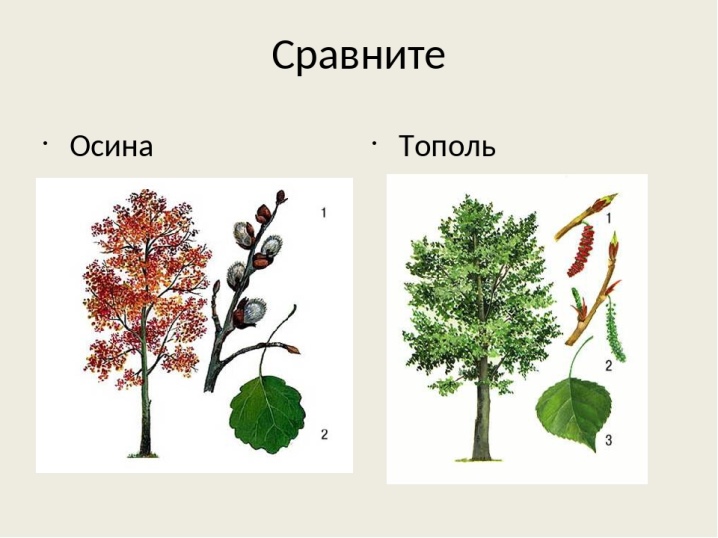
Differences in leaves
Spring, summer and early autumn are the seasons when it will be easier to distinguish one tree from another. Because at this time there are leaves on it, and the differences are read faster from the leaves.
Aspen is a tree belonging to the Willow family, there are three genera in this family: willow, chozenia and poplar. So here poplar is the genus to which aspen belongs... It is already possible to understand that trees are relatives. Although, in fairness, it should be said that aspen is confused not only with poplar, but also with alder and linden.
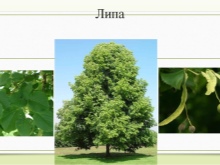
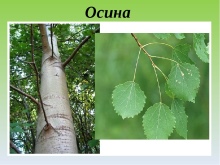
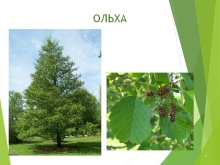
Differences in leaves:
- the buds and leaves of the aspen are less sticky than that of the poplar;
- aspen leaves cannot be called fragrant, because resin is not produced;
- by summer, the leaves noticeably coarse and darken, become dense;
- the aspen leaf itself is round and heart-shaped with noticeable notches, very expressive;
- on young shoots, the leaves grow up to 4-7 cm, on adults - up to 15 cm;
- an important feature of aspen - flexible and elongated petioles are flattened in the center, and when the wind blows, the leaves will tremble and twirl;
- an aspen leaf grows on an elongated and flexible stem, while the stem of a poplar is not so graceful;
- if you try to tie the leg of an aspen leaf into a knot, it will not break, and the leg of a poplar leaf simply will not be tied due to the fact that it is short;
- the upper side of the leaves has a rich green color, it is shiny, but the back is rather matte, and will be lighter at the top;
- aspen differs from the same silvery poplar in the whitish bottom of the leaf;
- in autumn, aspen leaves are golden and burgundy, but other trees of the poplar genus have lemon and yellowish shades.
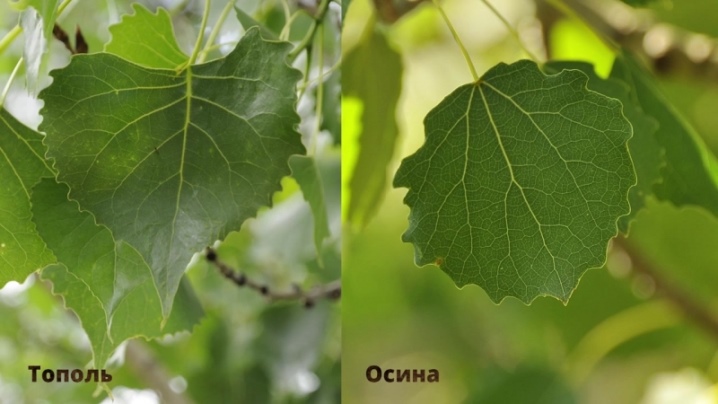
You can also conduct such an experiment. In the spring, watch the buds bloom on the tree. The twig can be brought home, put in a glass of water. If it is a poplar, the leaves will bloom quickly on the branch, a persistent smell will come from them, the stickiness of the leaves will be revealed to the naked eye. Aspen buds do not wake up so soon, there will be no expressive smell.
And the aspen begins to bloom earlier than the poplar, which begins to bloom closer to summer. Finally, how not to pay attention to the "mountains" of poplar fluff, which by June fills all paths in parks and courtyards. This is definitely a poplar, aspen does without such a strong "downfall".
It is necessary to explain why, in principle, there is a confusion between trees. Because common aspen is at the same time a trembling poplar, it really is one and the same culture. Therefore, in some cases, it will be correct to call aspen a poplar.
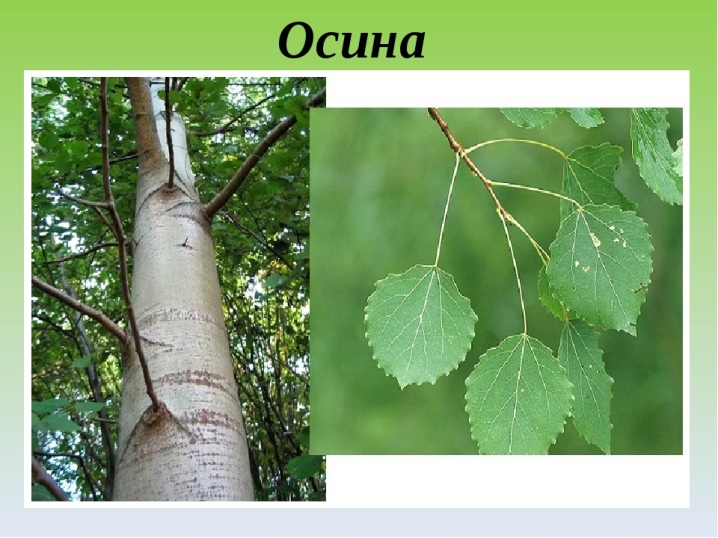
How do trees differ in color?
Aspen is dioecious, some of the trees may have flowers of the same sex, another part - bisexual flowers, but one of the sexes still dominates. Aspen begins to bloom in April, even before the leaves bloom. This is a very noticeable difference, because the rest of the poplars do not bloom at this time. A tree that is already at least 10 years old will begin to bloom.
The flowers of the aspen are small, collected in spikelets-earrings. If the earrings are red, they are male, if green, they are female.Birch trees also bloom with earrings, but between the aspen seeds a fluff catches the eye.
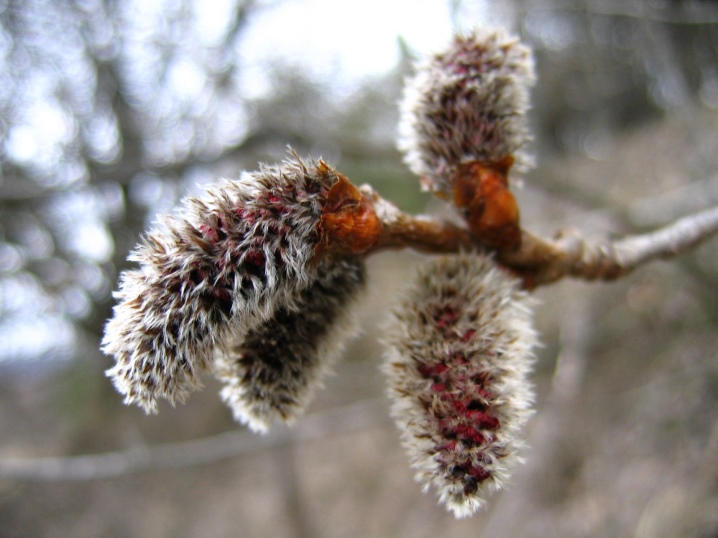
Aspen pollen is yellowish, medium-sized. The pollen grains are quite smooth, they fly quickly through the air. The seeds are capable of germinating within an hour after the female flowers are pollinated.
The fruit of the aspen is a very small, double-leafed capsule full of seeds. They have either a little fluff or lint. It fluffs, yes, but not at all like poplar - the scale of its fluff is much more modest. By the way, only female trees spread fluff. Aspen fruits ripen at the beginning of summer, ripe bolls open instantly. Small pear-like seeds are carried by the villi far from the native tree. And if they hit the ground, they will sprout quickly.
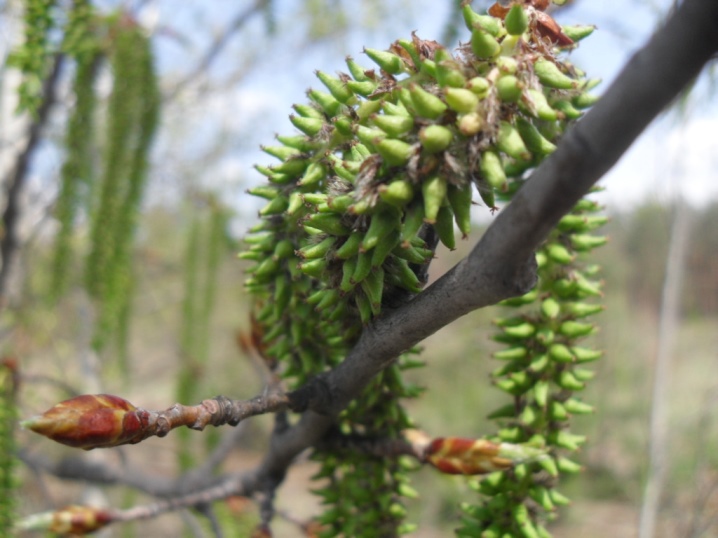
Other differences
It seems that the described difference is enough to stop confusing the two related trees. But no, there are other signs.
In the crown and branches
Aspen branches are more horizontal. It is directly striking if you put it next to a silver poplar, for example. The crown of the tree is also more luxuriant, it is more spreading. Other poplars cannot boast of such a "hairstyle", their crowns are much more compact. If a branch breaks easily, it is probably an aspen - its branches are more fragile, other poplars win in this sense.
The trunk of the plant is usually flat, cylindrical in shape. The tree is considered fast-growing, which is also one of the distinguishing features. In the first year, aspen can grow by a whole meter, and when it turns 5 years old - by all 4 meters. The tree grows up to 40 years, and then the processes slow down and the plant grows old.
Aspen lives from 90 to 120 years on average, but if the tree overtakes the fungus, it can die much earlier.
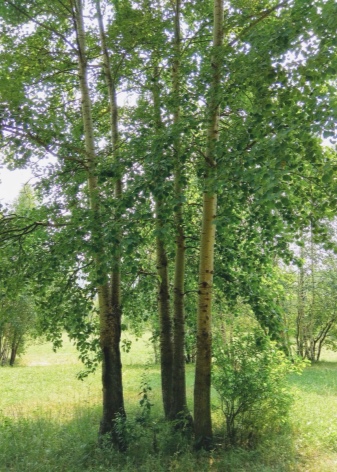
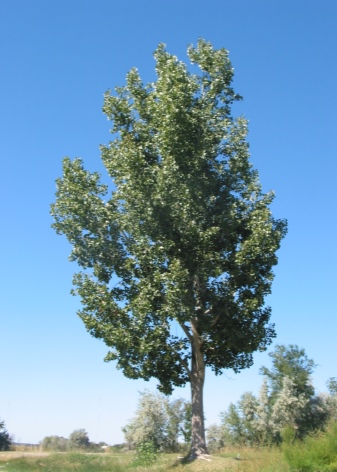
In the bark
The young, quivering poplar has a smooth bark with a gray-green undertone. With age, it will invariably darken, and expressive cracks may appear at the bottom of the trunk. If the tree has a bark shade that looks like a young olive, it may well be aspen. In other poplars, the bark is rather dark gray, no olive subtone is observed.
There is also aspen with dark bark in central Russia, but such cases are close to exceptions, and you should not rely on them.
By the way, aspen bark is in demand in folk medicine - they say it helps to establish kidney function, is considered an excellent diuretic and even saves with ulcers.
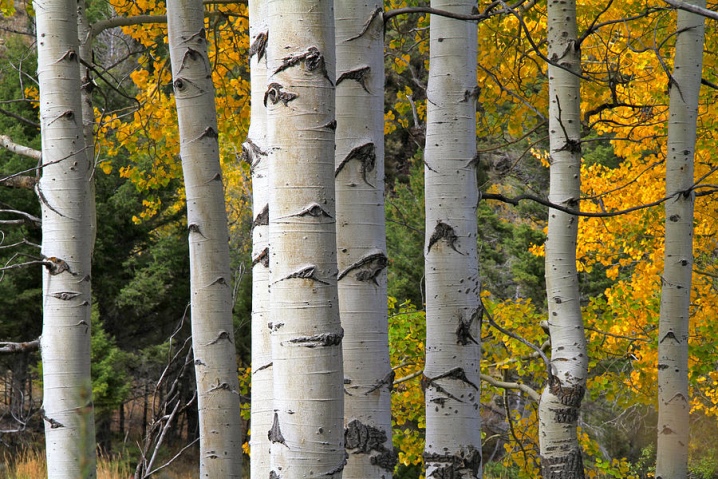
In wood
Aspen wood is very light and rather loose. In a fire, it will not flare up willingly, the wood does not smoke. In other poplars, it is not so dense, and the uniformity of color is not so noticeable. There is no core in aspen wood. Longitudinal sections reveal narrow stripes and spots, vessels are compared with annual layers.
By the way, aspen board is often confused not with poplar, but with linden. Only by the shade you can understand which is which. In the linden, the wood is more pinkish, in the aspen, rather, it goes into a greenish reflection. And the heart-shaped rays, which are noticeable in the linden, cannot be made out in the aspen.
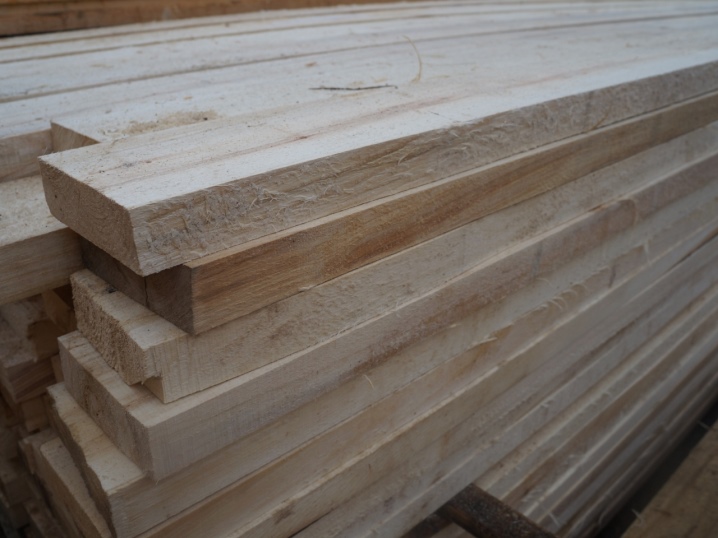
In general, aspen wood is often taken for the production of matches, and cardboard and plywood are also often made from this tree. But in construction, aspen did not receive much demand - its logs are subject to rapid decay. The breed is extremely susceptible to heart-shaped rot. As soon as the tree is damaged mechanically, rot will be right there. And just breaking off a branch is dangerous - the disease attacks the tree even through it. The causative agent of the disease is the aspen tinder fungus.
Finally, it is worth saying a little about the distribution of the tree. It prefers to grow on the shores of lakes and rivers, in forests and in forest-steppe, it does not bypass ravines and mountains. This is a light-loving tree. But aspen will not tolerate swampiness, therefore you will not find it on a low floodplain.
It is also not accustomed to dryness of the soil, but it will grow confidently on earth with high acidity.


By the way, aspen is the record holder, or to be more precise, is in the top 3 most common deciduous trees. It ranks second after birch. In the forest, aspen (another name - "trembling poplar") can be found more often than any other types of poplars. But in landscape design, this common tree is also in great demand. It looks especially bright and organic near water bodies.
For information on how to distinguish aspen by bark, see the next video.































































The comment was sent successfully.